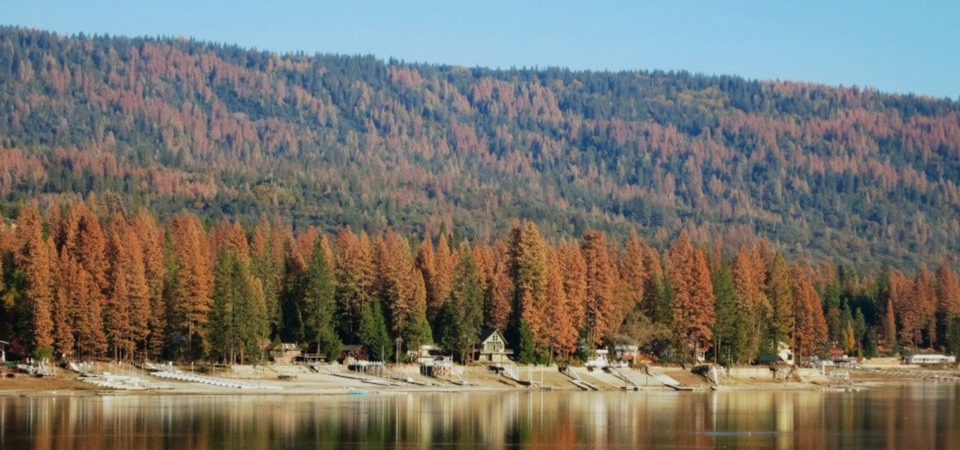
Credit: USDA
Central Sierra, Southern Sierra, Sierra Foothills: SC02, SC03, SC04.
August 10, 2016 - The South Ops Predictive Services has released the August Fuels and Fire Assessment report.
Significant tree mortality continues across the Sierra Nevada Mountains and Foothills due to the combination of an increasing bark beetle population and ongoing severe drought. Much of California is in its fifth year of drought which is causing the vegetation to be stressed, especially among many of the conifer species in the Sierra.
The tree mortality in the Sierra covers a broad area generally stretching from the Tehachapi Mountains northward along the Sierra front-range. It is estimated that over 66 million trees have died across California forestland since 2010. The highest mortality rates can be found within the 3-6 thousand foot level across PSAs SC02, SC03, and SC04. Normally conifer forests across the southern and central Sierra experience less than five percent mortality. In the last year a substantial number of conifer stands have displayed 40 to 100 percent mortality.
The deceased trees pose a number of hazards to firefighters and the general public such as:
FALLING TREES/BRANCHES
SNAGS
EXTREME FIRE BEHAVIOR
Risk to the public, as well as to ground suppression personnel and equipment from a greater likelihood of falling and/or weakened trees is a major concern. Higher decay rates have been observed in standing dead conifers which will contribute to falling trees. In addition, snags hinder fire suppression efforts and can cause serious injuries. Extreme fire behavior such as dangerous rates of spread (similar to what was observed on the Erskine fire), torching, crowning, and long range spotting can be expected. This will be especially true in situations where the wind and slopes are favorably aligned. In addition to the tree mortality, the annual grass crop is more robust than in recent years leading to a greater amount of fuel loading within the understory.
Mitigation Measures:
Fire Managers/ Firefighters should focus on life safety and safe ingress/egress, as well as suppression options and safe access prior to an event.
Agency Administrators need to ensure “Life First” is applied in all their Fire Management decisions and that the concerns brought forward in this document are included in all suppression and or prescribed fire operations.
Review the most current Southern California 7-day Significant Fire Potential product along with the Monthly/Seasonal Outlook from Predictive Services.
Fuels and Weather:
At the time of this writing, both the 100 and 1,000 hour dead fuel moisture values across PSAs SC02, SC03, and SC04 are either at or near record low levels for this time of year. Live fuel moisture values among the majority of species being sampled are close to the normal levels for early August. In general, cooler than normal weather is expected across the Sierra during the first half of August with very little if any lightning expected. There will be periods of stronger winds across the higher elevations but lower elevations should experience the normal diurnal wind patterns that are commonly associated with complex terrain.
Recently there has been a downward trend in fire activity across this area, and while it is easy to become complacent, the potential for significant fires still exists. Breezy to locally windy conditions during the afternoon and evening hours will present containment challenges with any new ignitions. Keep in mind that August and September are typically the hottest months of the year allowing adequate time for fuels to dry out even further.
Source: South Ops Predictive Services








